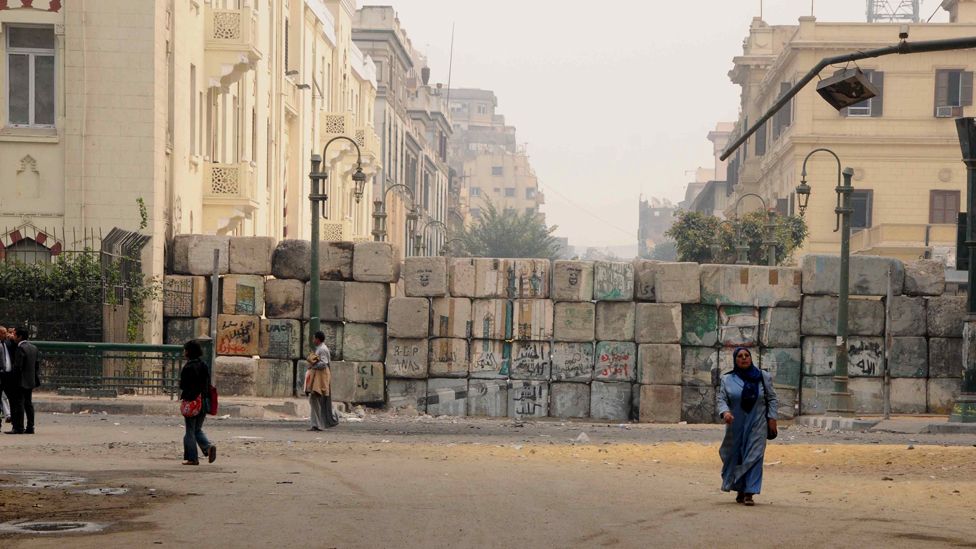In pictures: Cairo roadblocks in Egypt protests
- Published

Sections of concrete wall have been springing up in various parts of the Egyptian capital, Cairo. Erecting high walls blocking streets has been one way for the authorities to deal with often violent clashes in the centre of the city, but local residents say it disrupts daily life and demonstrators say it will not stop them.
The wall in Sheikh Reihan Street, off Qasr al-Aini, blocks direct entry to the Egyptian cabinet. It was erected during clashes in November 2011 in Mohamed Mahmoud Street, just around the corner. Young men and children climb on the wall that blocks Qasr al-Aini street from the cabinet building.
A young man climbs on the wall that blocks Qasr al-Aini street from the cabinet building.
This wall on Qasr al-Aini Street - leading from Tahrir Square to the cabinet, the Shura Council (Egypt's upper house of parliament) and several ministries - was put up in the early hours of 25 November 2012 after six days of clashes between police and protesters in the street.
The graffiti was added the next day.
Following the building of the wall on Qasr al-Aini Street, clashes moved to the nearby Simon Bolivar Square, also adjacent to Tahrir Square, and leading to the US embassy. The wall blocking Simon Bolivar Square from Tahrir Square was erected on 30 November, ahead of an expected large opposition protest.
The wall near Simon Bolivar Square, also adjacent to Tahrir Square, is not far from the US embassy.
An expanse of barbed wire is blocking Qasr al-Aini Street further along from the wall.
The other set blocks entry from Qasr al-Aini Street into a small area called Garden City where many embassies are located, including the British embassy. All these barriers are still standing as protests continue.
- Published3 December 2012
- Published30 November 2012
- Published3 July 2013